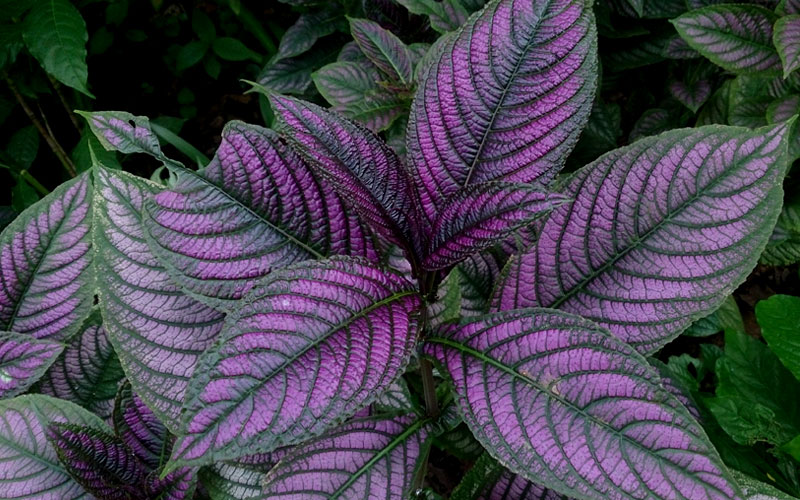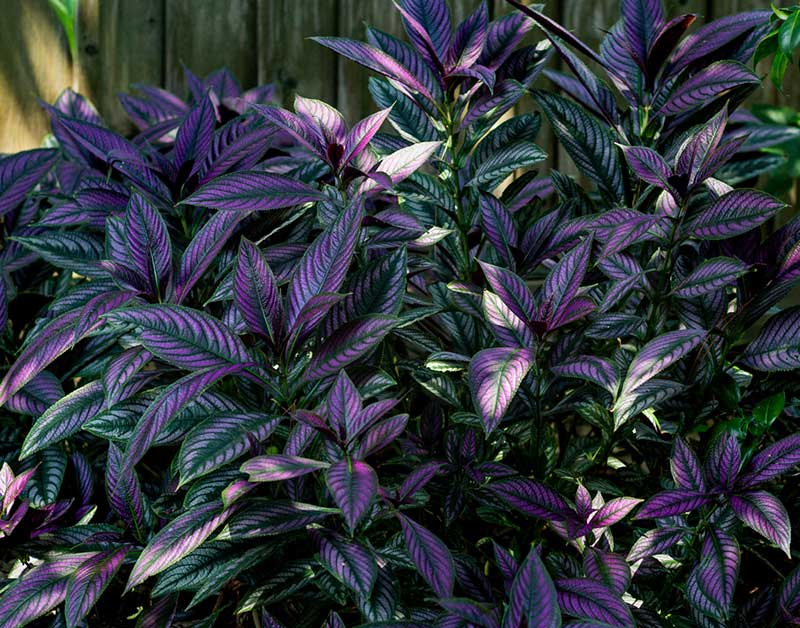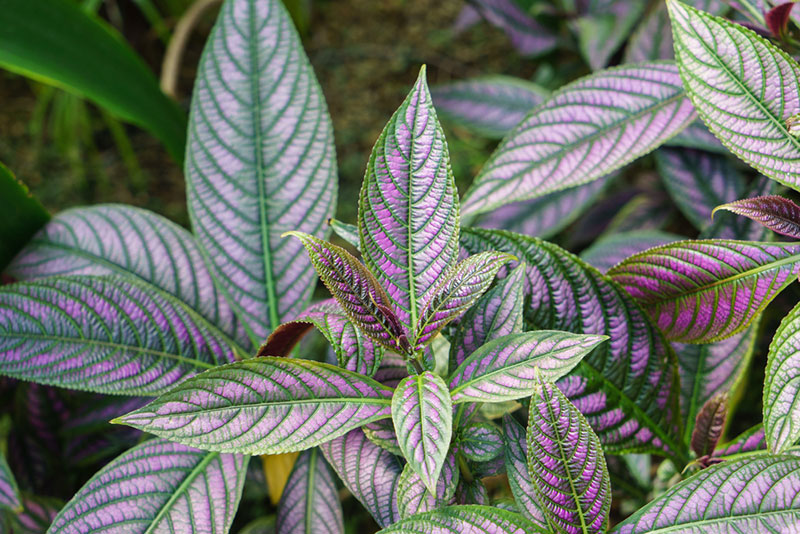
The beautiful leaves of the Persian shield plant (botanical name strobilanthes dyerianus) offers vibrant color far longer than a flowering plant. They are known for their long 4 – 7 inch leaves that range in color from purple to silver combined with green veins. It will bud light blue flowers for a short time throughout the year.
Not all Persian shield plants bloom, and, if they do, it’s usually in fall or winter. You typically won’t see the flowers unless the plant is in a very warm environment. When in ideal conditions, the plant can grow as high as 4 feet.
The plant derives from Myanmar where it’s a perennial that graces people with its beauty year-long. It’s considered a part of the Acanthaceae family of tropical, flowering plants. Caring for this tropical plant may take some time, but with the right care, you can enjoy a Persian shield plant in your home or garden, too.

How to Grow and Care for Persian Shield
Persian shield plants are most successful in USDA zone 10. The plant can be successful in USDA zones 8 -11, though. While it can grow outdoors in certain places in the southern United States and Hawaii, most people grow this beautiful plant indoors to regulate its environment and keep it flourishing. When growing the plant indoors, the plant must be in heat of over 60 degrees.
If you do want to plant your Persian shield outside, assume that it will only last for one reason or bring it inside when it starts to cool down. You’ll also want to space your plants 36 – 48 inches apart from each other.
Persian shield plants respond very well to fertilizer. Give your Persian shield plant food with nitrogen every two weeks during the peak season, but you can stop during the winter and fall.
One of the appeals of a Persian shield plant is its natural bushiness. However, you can make it even bushier in appearance by pinching the stems back every now and then.
Soil for your plant should have a basic pH level of 5.5. – 7.5.
Water requirements
Persian shield plants require constant moisture. Water them thoroughly and evenly twice a week. The top six inches of soil should be constantly moist. If you notice the soil getting dry between waterings, increase how much you water it. If growing the plants outdoors, mulch can help retain the moisture.
Since hydration is such a large part of keeping the leaves from wilting, daily spritzing with water is highly recommended.
Be sure to avoid water with chlorine in it when watering and misting your plant, because chlorine can damage the plant.

Sunlight & Temperature Requirements
The Persian shield plant requires warmth and humidity to prosper. A neat trick to give the plant the humidity it requires without disrupting your home is to put your plant’s pot on top of a plate with rocks and water. The water will evaporate upward into the plant.
If planting outdoors, the seeds will not grow unless the temperature is greater than 55 degrees. As mentioned earlier, the plants should consistently be at a temperature higher than 60 degrees.
While the plant thrives in heat and humidity, it prefers partial shade.
List of Common Problems That Persian Shield have and Solutions
As with many plants, the Persian shield plant can attract some pests, especially aphids and whiteflies. Checking the plant regularly can tell you if you have a problem. If you do develop a problem, switch to a fertilizer with little to no nitrogen.





